Arctic Climate
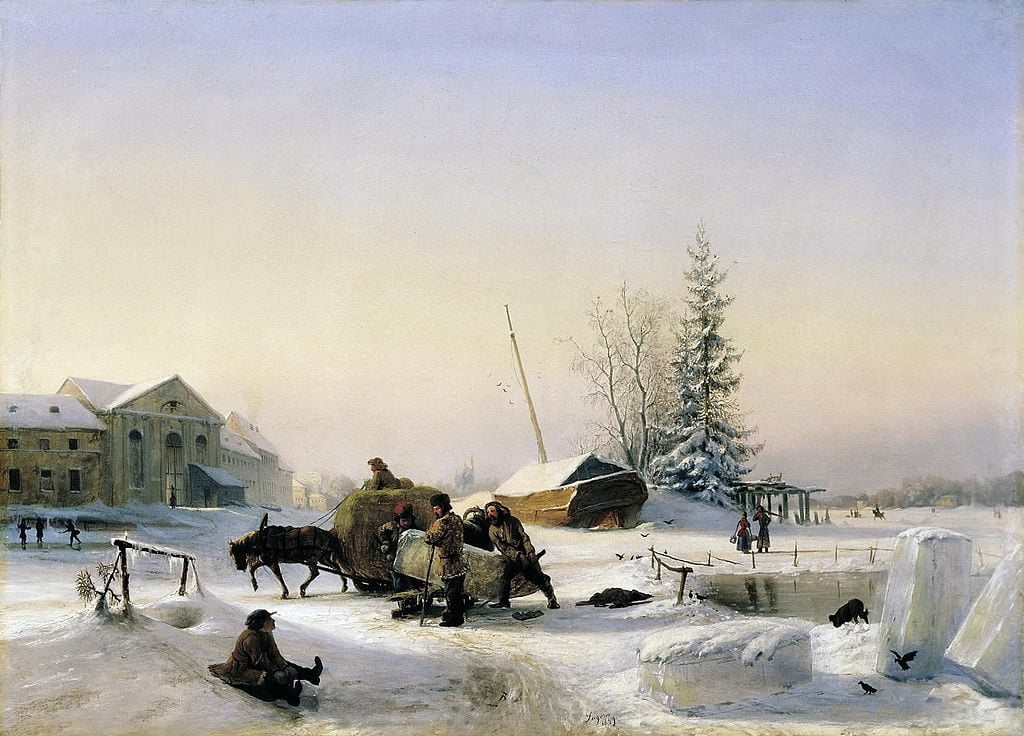
The coldest climates surround the poles. These arctic regions are frequently frozen and covered with snow; they have with bitterly cold, dark winters and cool summers. The types of terrain found in arctic climates range from the taiga (the northern or southernmost forests, which extend to the farthest limit trees can grow) to tundra to trackless snowy steppes. The terrain types can be mountainous and glacier-bound, thickly forested, or flat and snow-covered. Despite the harsh conditions, a variety of hardy creatures live in the arctic.
From simple snow fields to ice sheets 2 miles thick that bury entire mountain ranges, the polar regions of a world are both deadly and beautiful in equal parts, its apparent emptiness a facade that hides a complex ecology.
There are three primary geographic divisions of the arctic climatic zone, based on their proximity to the pole: the Boreal Expanse, the Outer Rim, and the High Ice.
The Boreal Expanse: The area within 5 degrees of latitude (approximately 350 miles) of the pole itself.
The Outer Rim: The area within 5 degrees of latitude of the arctic circle.
The High Ice: The remaining areas covered by the polar ice cap.
Temperatures
Temperatures in polar regions usually err on the side of being extreme ‘almost never rising above the level of ‘cold,’ and even then usually only in coastal areas.
Canny travelers know to arm themselves with both mundane and magical forms of protection to safeguard against the worst climate effects of the polar regions. Cold-weather outfits, furs, and spells like endure elements are vital for voyagers hoping to make their way through the arctic while avoiding the cold’s ill effects. Travelers who are part of a caravan equipped with cold-weather gear have all the necessary supplies to make the journey, and can safely endure most challenges presented by cold conditions. Only when a character strays from the caravan does she need to make saving throws against the effects of cold or exposure.
Frostbite
Creatures that suffer nonlethal damage from the cold climate become frostbitten or hypothermic, and are fatigued until the nonlethal damage is removed. It is possible for a character to undergo both frostbite and hypothermia simultaneously by failing two or more saves against cold or exposure, at which point she is treated as though suffering multiple fatigue effects, becoming exhausted.
Temperature
The base temperature in the polar regions is in the cold range, and only during summertime in the Outer Rim is there any substantial increase in temperature. Most temperature change is governed by sunlight (or its lack), wind, and altitude. The entire High Ice region sits atop a frozen massif over a mile tall, often hiding subglacial mountain ranges. Its elevation alone plunges the average temperature into the range of severe cold, and during the perpetual dark of the winter or during bouts of severe weather, it can become colder still. Assuming the baseline temperature is cold (below 40° F), the following effects may increase the severity of the cold weather to either severe cold (below 0° F) or extreme cold (below -20° F).
| Temperature Variation | |
| Severity Modifier | Condition |
| -1 step | Heat wave 1 |
| +1 step | Cold snap 1 |
| +1 step | Strong (or stronger) wind 1 |
| +1 step | Nightfall |
| +1 step | Low peak or high pass altitude (5,000-15,000 feet) 2 |
| +2 steps | High peak altitude (15,000+ feet) 2 |
| 1 See Table: Random Weather and Table: Wind Effects. | |
| 2 See Altitude Zones. |
Polar
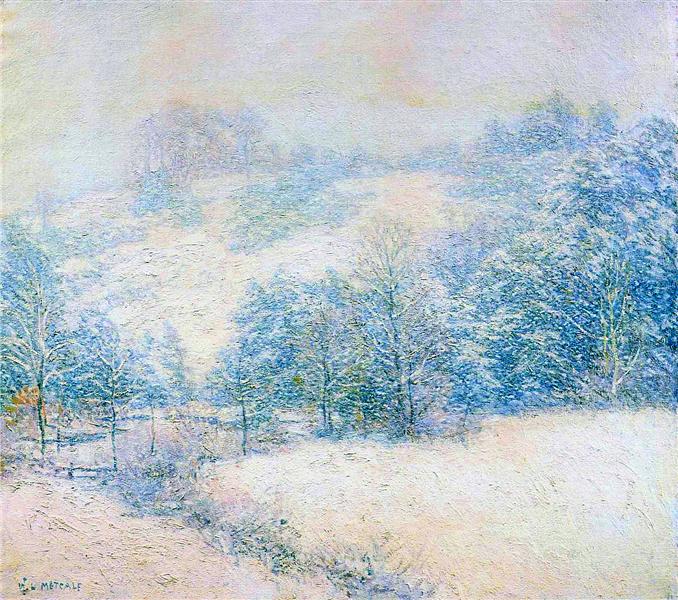
The extreme latitude of polar regions causes a distortion in the normal pattern of sunrise and sunset experienced in more temperate climes. Near the pole itself, a single day may seem to last all year, with a slow and gradual ascent of the sun for months at a time, though it never rises very high in the sky. Eventually, the sun will slowly sink into the horizon as the paltry polar summer fades into a lingering twilight and lengthy winter night.
Near the pole, both day and night cease to have meaning, as many turns of the stars may pass without the sun ever making an appearance, or the sun may block out the stars for hundreds ‘if not thousands’of hours. The darkest time of year is around the winter solstice; likewise, the brightest time of year takes place around the summer solstice. Because a journey into the polar regions may span many months keep track of the passing of seasons to determine the gradual shift from perpetual day to perpetual night or vice versa. The lighting conditions described below are those that prevail in each polar region for a given portion of the year. Weather conditions (such as overcast) and the cycle of the moon may affect the total amount of light shed during any particular season.
At the heart of the midnight sun season, the sun remains fully risen and sheds its light all day and night, appearing to move in a circular pattern in the sky rather than rising and setting. This is treated as bright light during both the day and night.
Midnight
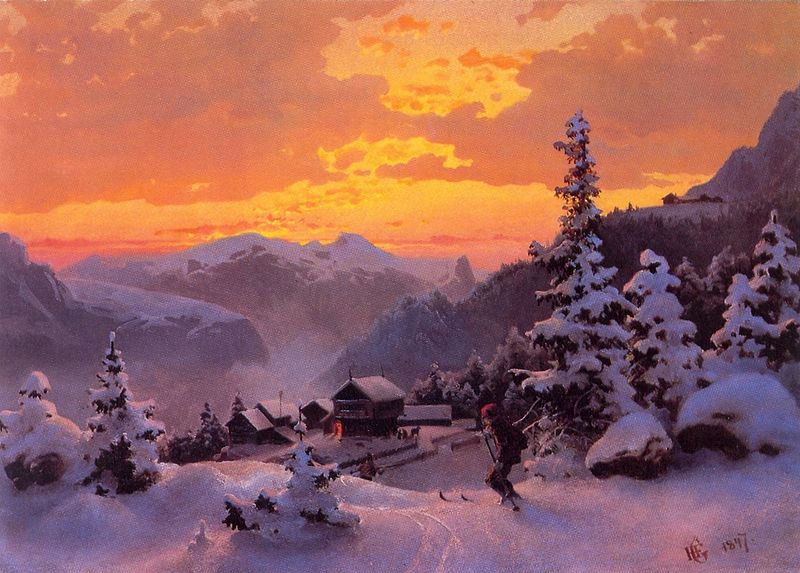
During this time, the sun sinks only to or just below the horizon even in the middle of the night. This is treated as bright light during the day (which is usually about 20 hours long) and normal light during the night.
Normal
This is the normal pattern of distinct days and nights, though the length of these periods is as variable as it is in any other part of the world, depending on the season, with bright light during the day and darkness during the night.
Polar
The sun ascends only to just at or below the horizon during the day, never truly rising; its refracted light faintly illuminates the sky, but brighter stars are visible. This is treated as dim light during the day (which is usually about 4 hours long) and darkness during the night. Polar Night: The sun is far below the horizon during both day and night, and sheds little or no light, even at the southern horizon. Even faint stars are clearly visible. This is treated as darkness during both the day and night.
Seasonal Lighting Patterns
| Month | Outer Rim | High Ice | Boreal Expanse |
|---|---|---|---|
| January | Polar Twilight | Polar Twilight | Polar Night |
| February | Normal | Normal | Polar Twilight |
| March | Normal | Normal | Normal |
| April | Normal | Normal | Normal |
| May | Midnight Sun | Midnight Sun | Midnight Sun |
| June | Midnight Sun | Polar Day | Polar Day |
| July | Midnight Sun | Midnight Sun | Polar Day |
| August | Normal | Normal | Midnight Sun |
| September | Normal | Normal | Normal |
| October | Normal | Normal | Normal |
| November | Polar Twilight | Polar Twilight | Polar Twilight |
| December | Polar Twilight | Polar Night | Polar Night |
Weather
Polar regions are distinct in weather patterns because the unique environmental conditions produce a continental wind condition called a polar vortex. Because of this effect, weather fronts and air masses from outside the pole are deflected or diverted away rather than bringing moisture or warmer air into the region. The coastal regions along its western and eastern edges may see very heavy precipitation in the form of snow (and, rarely, rain during the summer), as may the tundra regions along its southern edges on occasion, but the vast sprawling ice cap is essentially a cold desert, receiving only scant precipitation that is always in the form of snow.
Random
To determine weather effects in a polar region, use the Cold Climate column of Table: Random Weather for areas within 100 miles of a coastline or mountain range. A roll of 81-90 (precipitation) has a 30% chance of producing fog, 60% chance of snow, and 10% chance of sleet or hail. Farther inland than this, the climate is much drier. Use the same column, but replace the result of 91-99 (snowstorm) with 91-99 (windstorm).
Whiteout
Severe or stronger winds carry gusts of snow and ice particles, creating whiteout conditions that block vision beyond 5 feet, as per fog. Creatures in a whiteout move at half speed and take a -4 penalty on Dexterity checks and Dexterity-based skill checks as well as on vision-based Perception checks. Creatures native to cold environments or with the cold subtype take only half these check penalties, but still move at half speed. Creatures able to see normally in snowy conditions, such as frost drakes and white dragons, are unaffected by whiteout conditions.
Hazards
Besides the perils of keeping warm and navigating, there are a handful of natural and supernatural hazards that are unique to this desolate land.
Blackfrost
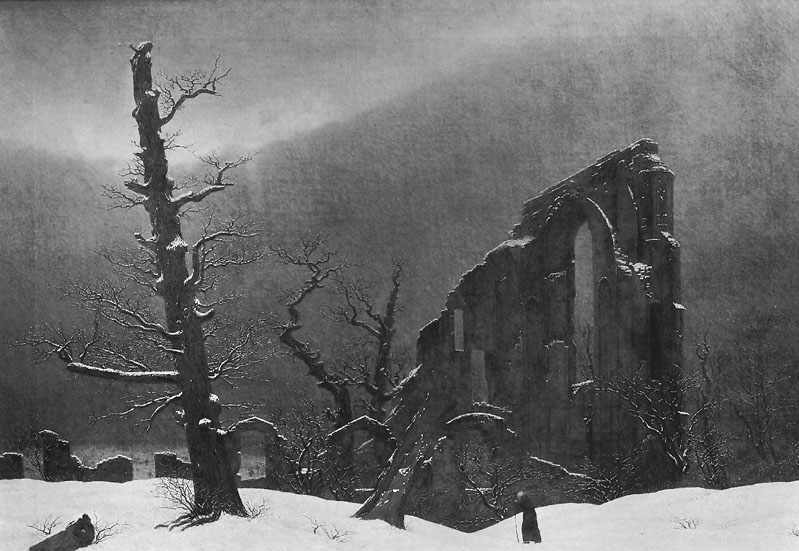
The ancient race that built the eerie city at the North Pole left behind strange arcane engines that still produce emanations of weird blue energy as well as a vile black sludge. This sludge oozes below the surface of the Boreal Expanse through subglacial channels, occasionally burbling to the surface in pools of dark slurry. Arctic winds sometimes bear flecks of the viscous substance and deposit it as a residue of black frost on cliff sides and glaciers.
Type poison, contact; Save Fortitude DC 15
Onset 1 minute; Frequency 1/minute for 6 minutes
Initial Effect 2d6 hp damage (half acid, half cold); Secondary Effect 1d2 Constitution damage; Cure 2 consecutive saves
Bonechill
Creatures that take lethal damage from cold weather exposure may contract this debilitating ailment.
Type disease, injury; Save Fortitude DC 16
Onset 1 day; Frequency 1/day
Effect 1d4 Dexterity damage, and any nonlethal damage incurred from being in a cold environment becomes lethal damage (though it can still cause hypothermia); Cure 2 consecutive saves
Ergia
Exposure to the strange arcane energies of the Nameless Spires taints those that come within 10 feet with their alien emanations and begins converting their vital tissues into liquefied blue energy. If a creature dies from ergia, its body dissolves and it cannot be raised.
Type disease, contact; Save Fortitude DC 20
Onset 1 day; Frequency 1/day
Effect 1d4 Strength damage and 1d4 Constitution damage, target must make a second Fort save or 1 point of the damage is drain instead, and a creature that has suffered ability drain glows blue as if limned with faerie fire; Cure 2 consecutive saves
Howl
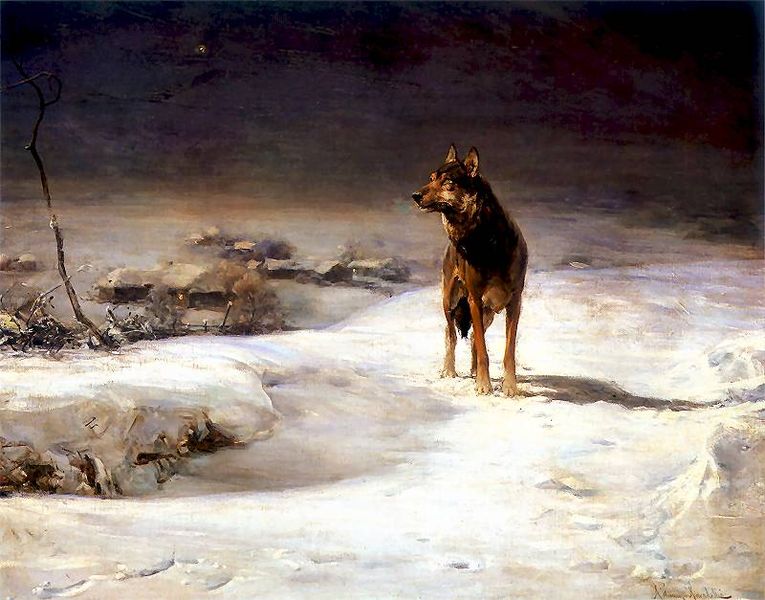
Creatures exposed to the long night of the pole can become disoriented and even slip into a complete and fearful madness.
Type insanity; Save Will DC 13
Onset 2d6 days
Effect -4 penalty on Will saves and Wisdom-based skill checks; target is shaken while animals are within sight or hearing (see below.)
DESCRIPTION
This form of insanity has its onset after a character is exposed to polar twilight or polar night for the stated number of days. A character afflicted with howl of the north begins to fear even the tamest beasts, fearing for her safety while simultaneously becoming more animalistic and primitive herself. Whenever a character afflicted with howl of the north sees a creature of the animal type or hears a bestial call (such as a wolf’s howling), she becomes shaken. Characters native to polar regions are immune to this affliction.
Polar
During any time when the weather creates bright light (such as during seasons affected by the polar day or during daytime of the midnight sun), characters are susceptible to mirages and must make a DC 15 Perception check at the beginning of each week in order to identify a mirage as such. If a character fails this check, he sees the mirage on the horizon as a body of water, tree line, or other geographic landmark, the specific details of which are subject to GM discretion. The character is not magically compelled to visit the location, but may convince his allies to head that way in hopes of reaching it or otherwise act accordingly if the mirage is tempting enough.
Equipment
Explorers in polar expeditions are well advised to bring specialized equipment in addition to their normal supplies.
| Item | Cost | Weight |
| Astrolabe | 100 gp | 6 lbs. |
| Cleats | 5 gp | 2 lbs. |
| Cold-weather outfit | 8 gp | 7 lbs. |
| Dog sled | 20 gp | 300 lbs. |
| Frostbite ointment | 50 gp | 1 lb. |
| Furs | 12 gp | 5 lbs. |
| Map maker’s kit | 10 gp | 2 lbs. |
| Pack animal, musk ox | 24 gp | – |
| Shovel | 2 gp | 8 lbs. |
| Skates | 10 gp | 3 lbs. |
| Skis and poles | 15 gp | 6 lbs. |
| Snow goggles | 12 gp | – |
| Snowshoes | 5 gp | 4 lbs. |
Astrolabe: Anyone who has been taught how to use this mechanical device can use it at night when the stars are showing to determine the date and time. This process takes 1 minute. An astrolabe grants a +2 circumstance bonus on Knowledge (geography) and Survival checks to navigate in the wilderness (and on Profession [sailor] checks to navigate at sea).
Cleats: These footgear spikes improve the wearers ability to move across icy surfaces. Each square of icy terrain costs only 1.5 squares of movement rather than 2 (or 3 squares rather than 4, for sloped icy terrain).
Cold-Weather Outfit: This heavy, quilted outfit grants a +5 circumstance bonus on Fortitude saves against exposure to cold weather.
Dog Sled: This conveyance is typically pulled by 1 or more riding dogs; the sled and any cargo are counted against the total carrying capacity of all dogs in the team to determine encumbrance. If the party is using caravan rules, a dog sled has the following statistics: hp 10; Traveler Capacity 1, Cargo Capacity 2; Limit none; Consumption 1.
Frostbite Ointment: One hour after being applied, this alchemical salve cures any creature suffering from frostbite, though any nonlethal damage from cold or exposure remains until the victim recovers. A creature cannot benefit from frostbite ointment more than once in 24 hours.
Furs: These simple furs are worn over armor and other clothing and grant a +2 circumstance bonus on Fortitude saves against exposure to cold weather. This bonus does not stack with any bonuses gained from the Survival skill.
Map Maker’s Kit: This kit gives anyone drawing a map as they travel a +2 circumstance bonus on Survival skill checks to avoid becoming lost.
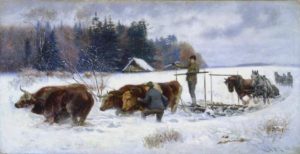
- Breaking a Road oil on canvas, 93 x 175.6 cm National Gallery of Canada (no. 572), purchased in 1913. Date 1894 William Cruikshank (1848-1922)
Pack animal, Musk Ox: These husky, shaggy beasts are sometimes domesticated as pack animals. Their statistics are identical to aurochs, but they are immune to cold weather effects (though not severe cold and extreme cold effects). Domesticated musk oxen have the docile special quality (see horse, and treat their gore attack as a secondary natural weapon. In the polar rim mountains of more eastern regions, yaks are used as pack animals and have identical statistics.
Shovel: This simple tool is useful for digging shelters or through drifts and other snow barriers.
Skates: These honed metal blades are worn on boots to enable swift passage over ice. The wearer may move (but not Climb) at her full speed on level icy surfaces. Her speed is halved when moving up an icy slope, but she may run or charge downhill on gentle or steep snowy slopes at quadruple speed. However, any skill check penalties for traversing rough ice while wearing skates are doubled, and the wearer takes a 4 penalty on combat maneuver checks to bull rush, drag, or trip, and to CMD against these maneuvers. Donning or removing skates takes 1 minute.
Skis and Poles: These polished wooden slats enable the wearer to glide across level snowy surfaces at his full speed. His speed is halved when moving up a snowy slope, but he may run or charge downhill on gentle or steep snowy slopes at quadruple speed. Any skill check penalties for traversing rough snowy terrain while wearing skis are doubled, and the wearer takes a 4 penalty on combat maneuver checks to bull rush, drag, or trip, and to CMD against these maneuvers. Characters cannot Climb while wearing skis. Donning or removing skis takes 1 minute.
Snow Goggles: These goggles, carved from bone with a narrow slit opening and held in place with leather straps, work as smoked goggles. In addition, they provide immunity to polar mirages.
Snowshoes: This wide footgear made of gut or leather webbing laced across wooden frames improves the wearers ability to move across snowy surfaces. Snowshoes reduce the penalty for walking through heavy snow by 50%; for example, if moving through snow normally costs you 2 squares of movement per square traveled, snowshoes reduce this cost to 1.5 squares per square traveled.
Arctic
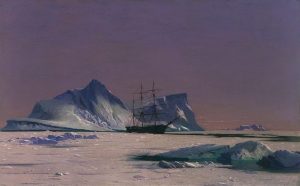
- Scene in the Arctic, oil on canvas painting by William Bradford, c. 1880, De Young Museum Date circa 1880
An iceberg is a gigantic block or mass of ice that has broken off from a glacier or ice shelf. This iceberg then floats in the world’s oceans and moves via wind and ocean currents. Icebergs are famous for their size and their ability to hide it under water. Typically, only one-tenth of an iceberg’s volume is visible above the water’s surface, while most of its mass is below. In general, the total size of the average iceberg is 1d10 × 25 feet above sea level, with another 9d10 × 25 feet below sea level. They are typically 1d12 × 50 feet across. Icebergs can be several miles across and several hundred feet tall, however. These super-sized icebergs often break up into smaller icebergs when they reach warm waters. Despite their size, icebergs move an average speed of 10 miles per day, which equates to a speed of around 5 feet per round.
| Iceberg Terrain | |||
| Feature | Growler | Standard | Super |
| Super Cliff | 10% | 15% | 20% |
| Crevasse | – | 5% | 5% |
| Slope, gradual | – | 5% | 10% |
| Slope, steep | 50% | 20% | 15% |
| Pool | 40% | 55% | 50% |
| Iceberg Terrain describes in general terms how likely it is that a given square has a terrain element in it. It is divided into growlers (less than 100 feet across), standard icebergs (more than 100 feet across, but less than 2000 feet across), and super icebergs (more than 2000 feet across). Icebergs have a special terrain element, the ice wall, which is marked on the border between squares rather than taking up a square itself. |
Cliff: Cliffs are similar to Hills Terrain, but are typically 1d10 × 10 feet tall. Cliffs taller than 60 feet take up 20 feet of horizontal space.
Crevasse: A crevasse is an irregular crack in the ice caused by ocean currents, shifting winds, or large air pockets in the ice. An average crevasse is anywhere from 3d10 × 10 feet long and 1d4 × 25 feet deep (sometimes deep enough to reach the water below), and 5d6 feet wide. A character falling into a crevasse drops into the water or onto the ice at the bottom. In addition, the steep, slick sides of the crevasse offer little opportunity to Climb out of the crevasse unaided (Climb skill check, DC 30). Some crevasses are hidden by thin crusts of ice; a character approaching a hidden crevasse is entitled to a Perception skill check, DC 20, to notice the crevasse before stepping into it, although running or charging characters do not get to make this check.
Ice wall: A vertical plane of ice, an ice wall requires a DC 30 Climb check to ascend. A typical ice wall is 1d8 × 10 feet tall on standard icebergs, and 2d10 × 10 feet tall on super icebergs. Ice walls occur on the edges of squares, not in the squares themselves.
Pool: Melting icebergs often accumulate large pools of freshwater in their valleys, flat surfaces, and at the bottom of their crevasses. These pools are shallow, usually no more than five feet deep and 1d6×5 feet in diameter. It costs 2 squares of movement to enter a square with a pool and the DC of Acrobatics skill checks increases by 3. Pools are typically too shallow to swim in.
Slope, gradual and steep: These function as Hills Terrain, except that Acrobatic skill checks have +2 to their difficulty due to slippery ice.
Stealth and Detection on an Iceberg: The maximum distance in iceberg terrain at which a Perception check for detecting the nearby presence of others can succeed is 4d10 × 10 feet. Standing at a high point of the iceberg may provide a better vantage point, however.

 Buy me a coffee
Buy me a coffee